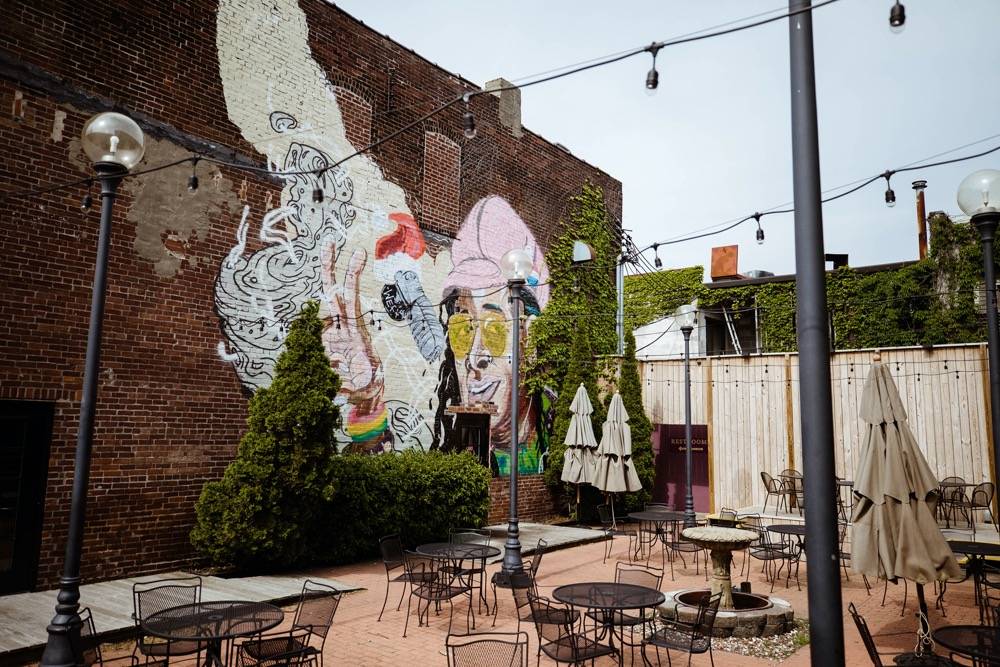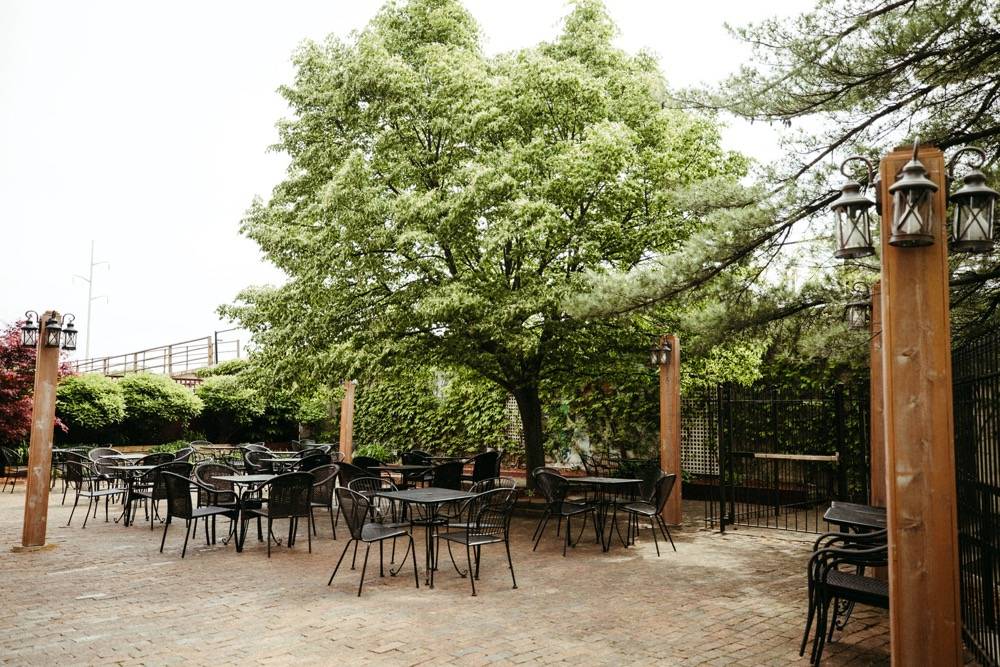As Champaign County moves towards Phase 3 of the State of Illinois’ reopening plan, our local city governments will be tasked with devising a way to safely organize and allow our hospitality industry to restart their on site services when Phase 4 becomes a reality. The time is now for the cities to empower restaurants, bars, and cafes to introduce those plans to the public, seek input, and then submit for approval to the city councils and Champaign-Urbana Public Health District. Waiting until after Phase 3 to introduce them could cause unnecessary delays in taking advantage of alfresco dining options, and confusion and problems in mitigating the risk of the spread of the coronavirus.
The good news is that there is discussion happening inside of both municipalities about what Phase 4 might look like for Champaign-Urbana. What does it mean to reduce street parking and even assign street closures to provide more socially distant seating for the restaurants and bars that inhabit our city centers? There are multiple options, of course, and we should expect debate between what might work best and what might cause more trouble than it is worth. This is why these plans need to be submitted to the public as soon as possible.
We asked both Bruce Knight, Planning and Development Director for Champaign, and Carol Mitten, Urbana City Administrator, what their timelines are for presenting plans to the public.
Neither of them had any specific date on when they would be able showcase anything to the public, but Knight seemed optimistic about getting something out sooner than later.
“The reopening plan we are working on includes Phase 4 businesses,” Knight told us, via email. “Because this will be a living document that will continue to change as new information becomes available, it is likely that it will change as we get closer to Phase 4.”
“Given that we are (all) still managing our way toward Phase 3 transition plans, I wouldn’t hazard a guess about the timeline for Phase 4 plans,” Mitten wrote. “We still don’t know the extent of PPE that will be required by IDPH as part of the Phase 3 transition and that may prove to be a formidable hurdle.”
What Phase 4 plans might look like seemed to inspire more questions than answers from Mitten. When we asked her if they might include extra outdoor space for tables and seating, she responded:
We have been thinking about outdoor dining in two ways: One that involves private parking lots and one that involves the public right-of-way. The first category is pretty straightforward. We will probably require some kind of simple plan submission for restaurant owners who want to convert part of their private parking lots to outdoor dining. The goal will be to ensure that fire lanes and access routes are kept open. The second category, that involves the use of public space, is much more complicated but we are actively considering our options. Among the issues that need to be sorted out: how to maintain the social distancing protocols for patrons, servers, pedestrians, and other users of the public space?; How will these protocols be enforced and by whom?; To the extent that curbside space (either sidewalk or roadway) is used, how do we maintain adequate access to the curbside for other users for pick-up and drop-off?; Who assumes the liability for disease transmission in the public space used by private businesses?; What is the infrastructure requirement to effectuate the necessary protocols and who will pay for it?
Knight was more succinct, however, about Champaign’s direction. “This is something we are working on, starting with discussions on how sidewalk cafes might operate once we reach Phase 4, but we are also considering other options of adding expanded outdoor seating for bars and restaurants in town.”
And as for the plan for sanitation, he acknowledged that it will take work, but indicated that they were moving towards it. “We know there will need to be a plan for this but it is not fully developed at this time.”
We suggest that both Champaign and Urbana:
-
Work in concert with CUPHD to develop a plan that follows the data and science findings to minimize potential risk.
-
Coordinate with law enforcement to check in and maintain safe environments in both cities.
-
Keep parking meters and garage sites free for the time being, until a better analysis of traffic patterns can be evaluated.
-
All non-downtown establishments should have the right to utilize their parking areas as outdoor seating.
-
Regularly publish updates via city websites and social media.
-
Submit their initial plan to their respective councils for public comment by June 30, 2020.
The liability issue that Ms. Mitten brought up is an important one, however, but we will assume that this is something that can be sorted out with city attorneys during Phase 3. Needless to say, we are in uncharted territory, and the mitigation of such risk will be paramount to our ability to safely reopen our businesses. We will need to all work together to create this new environment in a way that works for as many of us as possible.

Photo by Anna Longworth.
Carolyn Farren, owner of much beloved Farren’s in Downtown Champaign, shared that she “would like to open for outdoor seating only when we implement [Phase 4]. I am very excited to see all of our amazing supporters, but want to reopen as safely as possible. My Farren’s family’s safety and the health of our community is my utmost concern.” She continued, “The cities of our county, the C-U Public Health Department and the restaurant owners need to have a clear and concise plan for reopening on site dining as quickly as possible. There will be many new guidelines and we need time to execute. I am confident that we can all work together to reopen and protect our community.”
The economic impact of this type of quick change is unknown, of course. But what is known is that with the warm weather months upon us, people are already taking advantage of being outside. What we need is to provide people with safe, distant, and sanitized spaces to engage with one another upon Phase 4 becoming a reality. We realize there is no way to police the behavior of everyone, everywhere. It’s impossible to do much more than ask people to behave, and hope they take it seriously. But what our elected officials can do is provide us with a plan for safe and regulated spaces to start to assign some sense of what the new normal can look like.
In the case of these twin cities, we have people who are working hard to try to make the best out of a bad situation. Our city halls are filled with people who have been educated in their respective fields, and in this case, we absolutely have to rely on our planners and economic development directors to be decisive, thoughtful, and in this case, fast acting, about how we are going to manage this unique situation.
As you’ve likely heard a million times by now, we will get through this, together. We may not always see it the same way, and certainly, our disagreements with one another are vast. But we have no other choice than to allow our elected leaders and city staff to reimagine what we’re supposed to do and how we are supposed to do it.
The Editorial Board is Seth Fein, Jessica Hammie, Julie McClure, and Patrick Singer.








